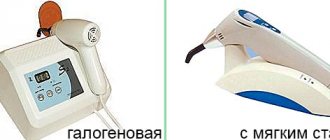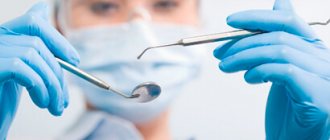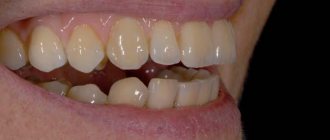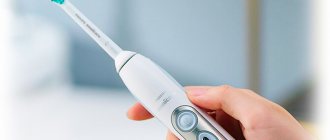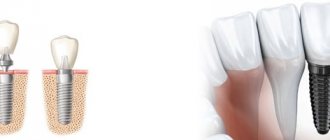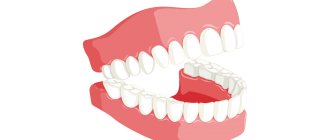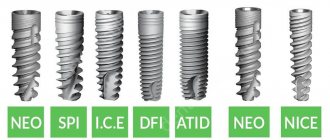Catalog: Dental handpieces / Help in choosing
Fig.1. Turbine and micromotor dental handpieces
Handpieces for dentistry can be divided into groups:
- Turbine FG Friction Grip
- Corner RA Right Angle
- Direct HP Handpiece
- Special (endodontic, surgical, for removing dental plaque, for dental work)
Dental handpieces from time immemorial
The history of the development of dental handpieces as an independent tool designed to convert the energy of a compressed air flow, rotation of a micromotor or electric current into the movement of a dynamic working tool fixed in the handpiece began in ancient times with a primitive bur, which was driven by a rope-arc stretcher.
In subsequent centuries, doctors attempted to create a tool suitable for preparing teeth, but lack of knowledge and the low level of technical progress did not give them a chance. And only in the middle of the 14th century did things get off the ground...
How it was in the 19th century
The prototype of a dental handpiece with a fixed steel bur can be considered the first automatic drill, powered by a spring mechanism that wound up for two minutes. This invention, made in 1864, belongs to the English doctor George Fallows Harrington. The bur speed reached 100 revolutions per minute, but the design was extremely inconvenient for the doctor. In the early 70s of the 19th century, American dentist James Morrison patented a drill with a foot pedal drive, where a sleeve with a tip was put directly on the output shaft and the torque reached 2000 rpm. It was this design that not only marked a revolutionary breakthrough in the development of dental equipment, but was also actively used in medical institutions in developed countries until the first quarter of the 20th century.
Russia, XX century
In Russia in the 30s of the 20th century, with the active development of dentistry as a practical discipline, industry began to produce several types of dental machines in which the dental handpiece was already a separate part and performed the same functions as the most modern handpieces. Only the speeds are incomparable: straight and contra-angle handpieces of those years had speeds from 3,000 to 30,000 per minute, the turbine handpiece invented in 1957 reached 45,000 rpm and was in great short supply, and the modern turbine handpiece reaches 500,000 rpm.
Straight and contra-angle handpieces
Straight handpieces are low speed. A conventional handpiece paired with a micromotor provides bur rotation speeds from 1000 to 30,000 rpm. Due to certain design features, they are most often used in surgical and orthopedic practice, as they allow significant pressure to be applied to the cutting tool without vibration. For comparison: the standard pressure on dentin for a steel bur at a rotation speed of 18,000 rpm is 500 grams, and for a tungsten carbide bur at 450,000 rpm is 2 grams. . Dental technicians also work with them in the manufacture and fitting of dentures, implants and other orthodontic structures.
Contra-angle handpieces are also low-speed and have a wide range of bur rotation speeds, making them a versatile tool. Contra-angle handpieces are used by dentists of all specialties. Its shape is convenient for working in hard-to-reach areas of the oral cavity, it can withstand significant lateral loads without vibration and easily works with various cutting tools. The following types of contra-angle tips are distinguished:
- Standard contra-angle handpiece with 1:1 gear ratio and bur rotation speed of 1,000 - 40,000 rpm. (blue markings).
- The overdrive contra-angle with gear ratios from 1:2 to 1:10 reaches speeds of 5,000 - 230,000 rpm. (red marking).
- Reducing tips have reduction ratios from 4:1 to 20:1 and speeds from 2,000 to 10,000 rpm. (green marking)
Straight and contra-angle handpieces from all manufacturers have a standard micromotor mounting (ISO 9001). According to the cooling system, tips are distinguished:
- No cooling. They are used extremely rarely and only for low speeds due to the risk of overheating and damage to enamel and dentin.
With external cooling. Used mainly in dental surgery.
With internal cooling. Used with air and electric micromotors and is the most common and effective type of cooling.
The backlight can be implemented through fiber optics or a built-in LED and light generator.
TG 656 EASY
TG 656 EASY
An elegant and powerful turbine handpiece without backlight, with a push-button bur clamp and a side 5-channel cooling system from the legendary company CHIRANA Medical - a world-famous manufacturer of high-quality medical equipment since 1935 in Stara Tura (Slovakia).
TG 656 EASY is a handpiece with air supply and is intended for drilling tooth enamel, dental cavities and grinding crowns.
The handpiece has a 5-channel cooling system with push-button fastening. The casing is made of brass with surface treatment. Connection type using 4-ISO MIDWEST.
The main advantages of the handpiece are low weight, easy movement in the patient’s mouth and ventilation of the tooth cavity. At the same time, despite its dimensions, the device is quite powerful.
Characteristics:
- Working pressure: recommended 0.21 to 0.23 MPa
- Speed: from 342,000 to 418,000 rpm. /minute
- Bur stopping time: up to 2 seconds. An undeniable advantage in terms of patient safety and hygiene, because when the rotor rotation is quickly stopped, it is impossible to harm the patient, and microscopic contaminants from the patient’s mouth are not sucked into the turbine head
- Air consumption: 38 l/minute ±2 l/minute
- Used burs: shank diameter 1.59-1.6 mm, length maximum 25mm
- Cutting diameter maximum 2.1 mm
- Collet force: minimum 35 N
- Sterilizability: AUTOCLAVE 135°C
- Power: 18 W
- Noise level: 60 dB
- Hose connection: ISO 4 MIDWEST
- Bearings: ceramic (made in Germany)
- Spray: 5-jet spray
- Weight: 46 grams
WHERE CAN I BUY
Turbine tips
In clinical practice, turbine handpieces are most often used by dental therapists. Turbine tips differ significantly from angled and straight tips in their technical characteristics. There are two main factors:
- High bur rotation speed, which is 150,000 - 500,000 rpm.
- Low mechanical power, due to which increased force on the tip leads to a decrease in the speed of the bur and its possible stop, as well as to rapid wear of the rotor group.
Working with a turbine handpiece requires a certain skill and constant control of the pressing force, since excessive or insufficient force on the drill reduces the efficiency of cutting hard tissue.
Sterilization of dental instruments
Sterilization and disinfection are important stages in the treatment of instruments and work surfaces, making any procedures safe for patients.
Disinfection is the destruction of pathogenic and opportunistic microorganisms - viruses, bacteria, fungi on tools and equipment to a level acceptable by sanitary and epidemiological standards.
Sterilization is the complete killing of microorganisms of all types, including spore forms, on surfaces and inside products.
To ensure all sanitary norms and rules, it is necessary to adhere to SanPiN 3.3686-21 “Sanitary and epidemiological requirements for the prevention of infectious diseases”, as well as SP 2.1.3678-20 “Sanitary and epidemiological requirements for the operation of premises, buildings, structures, equipment and transport, and also the conditions of activity of economic entities engaged in the sale of goods, performance of work or provision of services.”
The doctor must work accompanied by nursing staff who carry out processing of workplaces, disinfection, and also, in the absence of a centralized sterilization room, pre-sterilization cleaning and sterilization of medical devices.
Disinfection of the surfaces of objects located in the treatment area (instrument table, control buttons, keyboard, air gun, lamp, spittoon, headrest and armrests of the dental chair) is carried out after each patient. For these purposes, disinfectants that are approved for use in the presence of patients and have a wide spectrum of antimicrobial action are used.
All disposable instruments and consumables are collected and disposed of as Class B waste after each patient.
All reusable instruments and products that come into contact with the wound surface, mucous membrane, blood or injectable drugs are subject to sterilization.
Sterilization of instruments and other medical products necessarily includes the following steps:
- Disinfection
- Pre-sterilization cleaning
- Drying
- Sterilization
- Storage
Stage No. 1. Disinfection
Instruments must be carefully placed in a disinfectant solution. Before disinfection, all instruments or devices are opened, complex mechanisms are unscrewed and then immersed in a disinfectant solution. It is necessary to ensure that there are no air bubbles or voids left on the surfaces that would prevent the penetration of the product. When immersing locking instruments (tongs, nippers, scissors, etc.) in the disinfectant solution, you should make several working movements with them in the disinfectant solution.
The liquid should cover the instruments 1-2 cm above them for proper processing.
Disinfectants must have a broad spectrum of action against bacteria, viruses and fungi.
High-quality disinfectants must contain anti-corrosion additives so as not to damage the instruments.
Containers with ready-made or prepared solutions must have lids and stickers with the name of the disinfectant, concentration and date of preparation of the solution. When preparing a new disinfectant solution, the sticker on the container is filled with the relevant data.
It is necessary to monitor the correct preparation of the disinfectant solution and the preservation of its disinfectant properties until the end of the period of use, which is written on the label when preparing the solution, or until a precipitate forms. For this purpose, special indicators (test strips) are used, with which you can quickly and efficiently determine the suitability of the disinfectant solution for use. The indicator must be used immediately after preparing the disinfectant solution to ensure that the solution is prepared in the correct concentration, and also periodically monitor this solution to confirm that it has not lost its disinfectant properties. Each disinfectant has its own indicators; see the instructions for the disinfectant and indicators.
Please note that dental handpieces cannot be disinfected by immersion , only by wiping. We will talk about tip processing separately later.
Stage No. 2. Pre-sterilization cleaning (PSC)
After the disinfection holding time is completed, each product is washed in the same solution in which it was soaked, using a brush, a cotton-gauze swab or a fabric (gauze) napkin, after which it is rinsed with running water or cleaned in an ultrasonic cleaner. Not only dirt and small particles are washed away, but also the disinfectant itself, which damages the instruments with prolonged exposure.
Products with a ribbed surface (for example, diamond burs) and cavities must be cleaned in an ultrasonic cleaner, which cleans the smallest crevices on the instruments and their cavities.
After this, the instruments must be rinsed with distilled water to remove any remaining running water from them. If this is not done, then during sterilization, which is the next step, limescale deposits from the mineral residues of running water will be deposited on the instruments; over time, this will lead to a deterioration in the quality of the instruments, and will also interfere with high-quality disinfection and sterilization.
With a high-quality PSO, no biological tissue should remain on the instruments and the disinfectant solution should also be completely washed off. To assess the quality of PSO, an azopyram test is used; to carry it out, at least 1% of the instrument that has undergone a simultaneous cleaning procedure is taken, and if there are not many instruments, then at least 3 instruments of different types. If the azopyram test shows the presence of biological tissue residues or disinfectants, then all instruments are subject to repeated disinfection and PSO. If the azopyram test does not show the presence of biological tissue residues or disinfectants, then the instruments are allowed for further processing. It is also necessary to conduct a phenolphthalein test if this is indicated in the instructions for the disinfectant used.
Stage No. 3. Drying
After a high-quality PSO, instruments must be thoroughly dried before sterilization. To do this, they are laid out disassembled and opened on a clean, dry napkin and dried until visible moisture disappears, or special devices are used for this purpose that speed up drying, for example, a RELMA-BS-500 drying box or a drying cabinet.
Do not sterilize instruments that have not been dried!
After thorough drying, the instruments are sent for sterilization.
Processing of dental handpieces.
The process of manual processing of dental handpieces takes place in several stages:
- Rinse the tip channel with water (using mandrels or other devices) and then blow with air.
- Disconnect the handpiece from the dental unit, wipe the outer surfaces with a cloth moistened with water until visible dirt is removed.
- Treat the outer surfaces of the tip with special disinfectants approved for use for these purposes (taking into account the recommendations of the manufacturer of the tip).
- Disassemble the detachable parts of the tip and remove the tool (bur, cutter, disk, etc.).
- Lubricate the tip with special lubricants intended for these purposes. Remove any remaining grease by wiping with a clean cloth.
All washing, purging and lubrication operations can be carried out manually, but it is preferable to use cleaning and lubrication devices, because they involve more thorough processing of the tips. Before loading into such devices, the tips must also be wiped with a clean damp cloth to remove visible dirt and treated with a cloth moistened with a special disinfectant.
Next, the tips are sent for sterilization.
Stage No. 4. Sterilization
After completing all the previous steps, dental instruments (including handpieces) are ready for sterilization.
Sterilization can be carried out in packaged form, with instruments placed in individual disposable or reusable packaging.
Sterilization can also take place unpackaged, and the instruments must be immediately used for their intended purpose, or can be stored in a UV chamber for the period specified in the instructions for the UV chamber.
To sterilize dental instruments, it is recommended to use a steam sterilizer - an autoclave and an infrared sterilizer (IR sterilizer).
Sterilization in an autoclave occurs due to exposure to steam and high temperature (from 121 to 134 ° C, at a pressure of 1.1-2.1 kgf/cm2). The full sterilization cycle (heating-preliminary air removal-sterilization-drying) takes about 25-50 minutes (depending on the selected sterilization mode). The autoclave uses distilled water to operate.
In an autoclave, products made from corrosion-resistant metals, glass, textile products (132-134°C), and at a temperature of 120°C, products made from rubber, latex, and certain types of plastics are sterilized.
It should be understood that saturated steam under high pressure is a fairly aggressive chemical agent that has a corrosive effect on metals. The instructions for some dental instruments even specifically indicate that it is not recommended to autoclave them, although these instruments are made of stainless steel. The same applies to instruments that have cutting edges (there are especially many of them in orthodontics); they quickly become dull when sterilized in an autoclave. Therefore, to sterilize such instruments, it is recommended to use an infrared sterilizer, which sterilizes in the most gentle way due to short-term heat exposure and the absence of aggressive chemical agents.
IR sterilizers use an environmentally friendly thermal agent - radiant energy in the optical range (powerful visible and infrared pulses). With this method of transferring thermal energy, heating of the sterilized products occurs quickly and efficiently. Sterilization lasts from 4 to 10 minutes. Products made of metals and glass are sterilized.
Read more about the IR sterilizer in our next article.
To control sterilization modes, it is imperative to use chemical indicators during each sterilization cycle, which are laid out inside the sterilizer chamber and placed inside each package (if sterilized in packaged form).
Stage No. 5. Storage
If the instruments were sterilized in packaged form (Kraft bags, containers, etc.), then they remain sterile for the period specified in the packaging instructions, subject to the necessary storage conditions (the storage place must be clean and dry, without conditions that may lead to condensation).
If instruments were sterilized unpackaged, they must either be used immediately for their intended purpose (within 1 hour after removal from the sterilizer) or stored in a special ultraviolet chamber (UV chamber) for the time specified in the instructions for the UV chamber.
Please note that instruments cannot be stored in the UV chamber in packages that have a transparent film, because... this film is destroyed when exposed to UV radiation.
Connection Standards
The turbine tip can be directly screwed onto the mouthpiece of the installation hose or you can use a quick-release adapter to which the tip can be attached by simply snapping it into place. There are five standards for hose connections, the most common being the 2-channel Borden, 4-channel Midwest (non-illuminated), and 6-channel Midwest LUX with fiber optics. As a general rule, if you want to use quick-release adapters, then you need to buy them of the same brand with the tip.
TOP 5 popular models
To choose a dental handpiece, you need to clearly understand for what purpose it is being purchased. Given the multidirectional activities of specialists, several tips are required. The advantages of some complement the positive aspects of others.
Today, German and Japanese handpieces, as well as budget models from Russian manufacturers, are popular among dentists. Chinese tips appeared on the market quite recently, but they also managed to conquer their segment. Disposable ones are especially in demand - they are used during one dose.
NTKS-300-01 M4, Micron
Turbine push-button handpiece with standard head for therapeutic work.
NTS-300-05 M4, Micron
Friction bur clamp with standard head for therapeutic work.
Hunan Jinme Dental Handpiece (China)
The handpiece with M4 key is intended for orthopedics.
Standard RT07 with NSK rotor, Rito Dental
The turbine tip with fiber optics guarantees constant visibility of every area of the surface being treated.
TC-40P B, 2-channel BORDEN
Reference!
The quality of a dental turbine handpiece is reflected in its cost. Products from Russian manufacturers will cost between 2-12 thousand rubles, European ones - from 10 to 60.
Source
Head dimensions
Turbine tips are available with heads of 3 sizes:
- Standard head (std). A universal model for therapeutic treatment.
- Small head (mini). Designed for children's use and light work that does not require pressure on the bur. The power is slightly less than standard.
- Large head (midi). Mainly used in orthopedic practice, it has increased power and bearings with a large margin of safety.
Illumination of the working area is implemented in the same way as in straight and angled handpieces: through fiber optics or a built-in LED with a generator. The bur clamp is most often push-button, but inexpensive models may use a latch or a special key. Tips are available with ceramic and metal bearings. Ceramic bearings are more expensive and more durable, but with proper care, metal bearings are just as durable.
Specifications
When choosing, pay attention to several important points. The main characteristics of dental handpieces include:
Bur fixation
A screw collet that secures the bur in the tip is considered more reliable. The disadvantage is the inconvenient replacement of the cutting tool. The collet can be easily damaged if over-tightened. The push-button collet is extremely convenient to use.
Connector for connecting to the drill
Thanks to the connector, it is attached to the hose of the dental unit. They can be six, four, three or two-channel. Four-channel (without electrical wiring) are popular. Midwest-connected handpieces provide greater comfort and precision. Two and three channel TVs are now considered obsolete.
Type of working head
When choosing the type of working head, there are 3 generally accepted standards: for children's appointments (Mini), medium or standard (Std, the most popular) and large (Midi) for orthopedics.
Work area illumination
A turbine handpiece equipped with its own light source will cost significantly more, but it has many advantages. Additional lighting guarantees safe and precise work in the patient's mouth. In addition, the strain on the dentist’s eyes is reduced several times.
Cooling system
The rotation speed of the turbine is high, so it is impossible to do without a spray as a cooling system. There are tips with separate supply of water and air. These include the three-hole Midwest and Borden. There are tips where two functions are combined into a common one (Borden). A cooling system is installed in each turbine, but with one difference - the number of nozzles cooling the boron changes.
Dimensions: weight and size
The average tip head size is 15.5 mm. Weight - 82 grams.
Ergonomics: how it fits in the hand
The handle and working part of the tool should not touch. The ring finger becomes the axis of rotation and support: it rests against the tooth, which makes it possible for effective work. The ring and middle fingers are pressed together: this provides support. The little finger is not involved: it should be relaxed and not bent.
Turbine power
Handpieces vary in power level: the more powerful the tool, the more pleasant it is to work. If there is not enough power, the drill stops and the treatment time increases. The speed of all turbines is almost the same. Manufacturers of handpieces make them according to approximately the same pattern, and the turbine will in any case slow down when it comes into contact with hard tissue.
Bearing type
The tip has 2 miniature bearings built into it: the axis with the turbine impeller rotates on them. The following types are distinguished: metal and ceramic. Ceramic is much lighter than steel and quieter in operation, and has less wear and tear.
Our recommendations
So, to select a specific turbine tip model, you should pay attention to the following points:
- Hose Connection Standard (Borden, Midwest, Midwest LUX, Siemens)
- Presence/absence of quick-release adapter
- Head size (std, mini, midi)
- Bur clamp type (button, latch, key)
- Lighting (fiber optics, built-in light generator)
- Cooling (1-point, 3-point, 5-point spray)
- Bearings (ceramic, metal)

